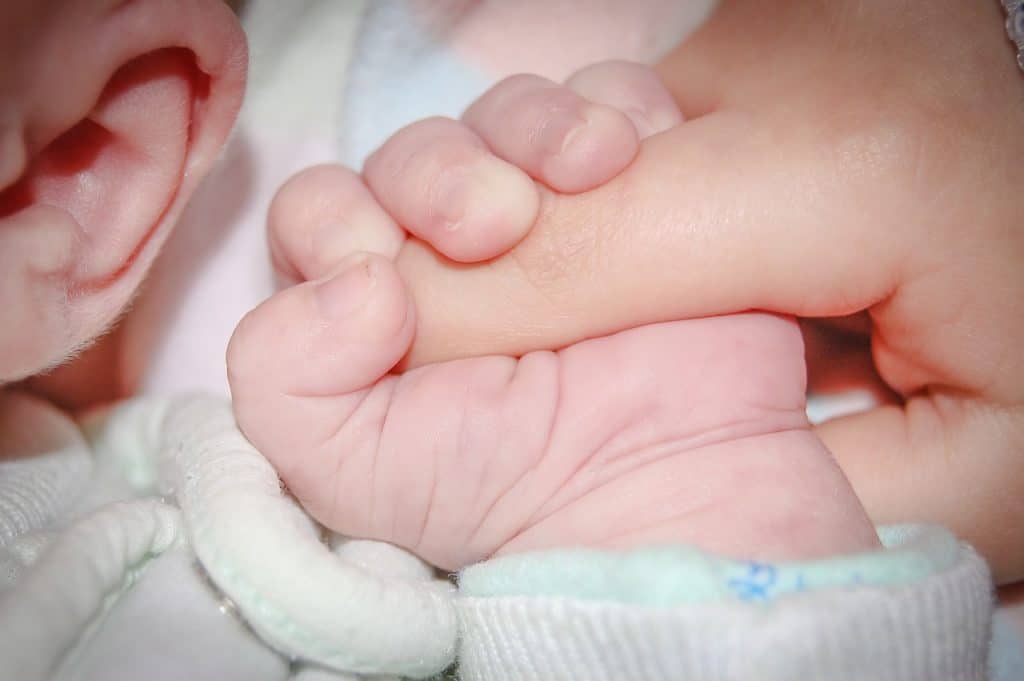
CORD BLOOD BANKING IN NEBRASKA
What is Cord Blood banking in Nebraska?
Cord blood banking is a procedure that has been gaining increased attention in the medical world for its potential to help treat a range of diseases and medical conditions.
In simple terms, cord blood banking involves collecting and storing stem cells from a newborn’s umbilical cord. These stem cells are rich in potential and can be used to help treat a range of illnesses, including certain cancers, blood disorders, and genetic diseases. As a result, many expectant parents are now considering cord blood banking as a way to secure their child’s health for the future.
The process of banking umbilical cord blood involves collecting the blood immediately after birth and sending it to a specialized facility for processing and storage.
The cost of storage can vary depending on the service provider and the length of storage time chosen. There are many factors to consider when deciding whether to bank cord blood, including family medical history and the potential future use of the stem cells.
What is cord and tissue banking in Nebraska?
Cord tissue banking involves the collection and storage of the cord tissue, which is the gel-like material that surrounds the blood vessels in the umbilical cord. This tissue is rich in stem cells, which are the building blocks of the body’s immune and blood systems. The stem cells found in cord tissue are different from those found in cord blood, making it a valuable resource for future treatments.
Umbilical cord blood and tissue collection in Nebraska?
Umbilical cord blood and tissue are collected immediately after birth via a non-invasive and pain-free procedure.
The umbilical cord is clamped and cut as usual, but instead of discarding the placenta and umbilical cord, they are collected by a trained healthcare professional.
The blood is extracted from the cord using a sterile needle and collected into a specialized bag with anticoagulants to prevent clotting. The tissue is collected by cutting a small piece of the cord and placing it into a sterile container.
Both cord blood and tissue are then transported to a laboratory for processing and storage.
This procedure is a safe and effective way to collect valuable stem cells that can be used for future medical treatments.


Umbilical cord blood and tissue storage near Nebraska
Umbilical cord blood and tissue are valuable sources of stem cells, which have the potential to treat a wide range of diseases.
To ensure the preservation of these stem cells, they are collected at the time of birth and stored in specialized facilities.
The most common method of storage is cryopreservation, where the stem cells are slowly frozen and stored in liquid nitrogen at -196°C.
This ensures that the stem cells can be retrieved and used for medical purposes for many years to come. Additionally, many cord blood banks also offer the option to store the umbilical cord tissue, which contains a different type of stem cell that can also be used for medical treatments.
Overall, proper storage of umbilical cord blood and tissue is crucial for their potential use in future medical treatments.

Right after your baby is born, there’s a simple and totally painless way to collect something really special — the blood and tissue from the umbilical cord. After the cord is clamped and cut like usual, instead of throwing it away, a nurse or doctor collects the blood with a sterile needle and takes a small piece of the cord tissue to save.
These samples are sent to a lab where they’re frozen super cold to keep the stem cells alive. These stem cells could help treat illnesses in the future. It’s a safe process and many parents feel good knowing they’ve saved something valuable for their child’s future health.
Welcome to our latest blog post titled “Nebraska”. Today, we’ll be delving deep into the heartland of America and exploring all that this great state has to offer. Nebraska, located in the Midwest region of the United States, is known for its vast prairies, beautiful sandhills, and diverse wildlife. Its colorful past and strong agricultural heritage have made it a unique destination for travelers seeking an authentic taste of rural America.
At the forefront of Nebraska’s attractions is its stunning landscape. From the iconic Chimney Rock and the Scotts Bluff National Monument to the picturesque Platte River Valley, Nebraska is home to a rich tapestry of natural wonders. Additionally, the state is famous for its many farms and ranches that are some of the largest in the country. Visitors can enjoy a multitude of activities ranging from horseback riding to exploring local farmers’ markets for fresh produce.
Moreover, Nebraska is a hub for cultural activities, with towns like Lincoln and Omaha home to world-class
1. Nebraska is located in the Great Plains region of the United States.
Nebraska is a state located in the Great Plains region of the United States. It is bordered by South Dakota to the north, Iowa to the east and Missouri to the southeast, Kansas to the south, Colorado to the southwest, and Wyoming to the west. The state is characterized by vast, treeless prairies, with gently rolling hills that rise gradually from east to west. The Great Plains region of the United States is known for its fertile soil and abundant grasslands, making it a prime location for farming and ranching. Nebraska is no exception, as the state is home to many agricultural operations that rely on the rich soil and favorable climate. The Great Plains region is also known for its extreme weather conditions, including thunderstorms, tornadoes, and blizzards, which pose significant risks to the state’s residents and its economy. Despite these challenges, Nebraska remains a vital and productive region of the United States.
2. Nebraska is the only triply landlocked state in the US.
As one of the most unique states in the United States, Nebraska stands out in many ways. One of the most fascinating facts, however, is that Nebraska is the only triply landlocked state in the US. This means the state is completely surrounded by landlocked states, making it impossible to reach an ocean without crossing multiple states. Despite this, Nebraska has a diverse range of landscapes and attractions, from the rugged beauty of the Sandhills to the vibrant city scenes of Omaha and Lincoln. Visitors to Nebraska can experience the hospitality of the Midwest while discovering the unique natural wonders and cultural events that make this state such a special place to explore.
3. The state is bordered by South Dakota, Iowa, Missouri, Kansas, Colorado, and Wyoming.
Nebraska, a state in the Midwestern region of the United States, is bordered by six other states, forming a strategic location in the heart of the country. To its north are South Dakota and Iowa, while to the east lies Missouri. Kansas and Colorado share borders with Nebraska to the south, and Wyoming lies to the west. The state’s geography ranges from treeless prairies of the Great Plains to the rolling hills of the Sandhills, which constitutes almost 1/4th of Nebraska’s total area. The variety of scenic landscapes makes Nebraska a hotspot for outdoor recreation such as fishing, hunting, camping, and trail walking, attracting many tourists and sport enthusiasts all year round.
4. Omaha is the largest city in Nebraska.
Nebraska is the 16th largest state in the United States and is located in the midwestern region of the US. It is known for its vast, open plains and rich agricultural land. As the largest city in the state, Omaha has a population of approximately 475,000 people and is one of the largest metropolitan areas in the midwest. It is a hub for business, culture and education, boasting several world-class museums, universities and Fortune 500 companies. In addition to its thriving economy, Omaha is also known for its beautiful parks and lively entertainment scene, making it an attractive destination for visitors and residents alike.
5. The capital of Nebraska is Lincoln.
Nebraska, also known as the Cornhusker State, is located in the Midwestern region of the United States. With a total area of 77,354 square miles, Nebraska is the 16th largest state in the country. The state capital of Nebraska is named Lincoln, which is also the second-most populous city in the state after Omaha. Home to the University of Nebraska-Lincoln, the capital city features a vibrant downtown area with unique shops, restaurants, and cultural attractions. Additionally, Lincoln is known for its extensive trail system and parks, earning it the nickname “Star City.” Overall, the capital of Nebraska is a hub of activity and opportunity for residents and visitors alike.
6. The state is known for the Sandhills, Chimney Rock, and Scotts Bluff National Monument.
Located in the Midwestern region of the United States, Nebraska is a state renowned for its stunning natural landscapes and rich cultural heritage. The state boasts several prominent attractions, including the Sandhills, one of America’s largest intact prairies and home to diverse species of plants and animals. Visitors can also marvel at the stunning Chimney Rock formation, one of the most recognizable landmarks along the Oregon Trail, and explore the rich history of the Scotts Bluff National Monument, a site that played a significant role in the western expansion of the United States. These attractions represent just a small portion of what Nebraska has to offer and make it a must-visit destination for travelers seeking a unique and unforgettable experience.
7. The official state bird of Nebraska is the Western Meadowlark.
One interesting fact about the state of Nebraska is that it has an official state bird: the Western Meadowlark. This prairie bird is known for its beautiful, melodic song and is commonly found throughout the Great Plains region of the United States. The Western Meadowlark was named the official state bird of Nebraska in 1929, chosen for its representation of the state’s prairie landscape and its significance to the many farmers and ranchers who call Nebraska home. In addition to being the state bird of Nebraska, the Western Meadowlark is also the state bird of Kansas, Montana, North Dakota, Oregon, and Wyoming. It is a bird that holds great importance to the many people who reside in these states and serves as a reminder of the natural beauty and wildlife that can be found in the American Midwest.
8. The official state flower is the Goldenrod.
Nebraska is a state located in the Midwestern region of the United States. Known for its vast grasslands, rolling hills, and towering sandhills, Nebraska is home to a variety of unique flora and fauna. Within the state, the official state flower is the Goldenrod. This vibrant yellow flower can grow up to 7 feet tall and is commonly found throughout the state’s prairies and meadows. The Goldenrod has been the official state flower of Nebraska since 1895 and was chosen for its beauty, hardiness, and prevalence throughout the state. Its bright color and distinctive shape make it a favorite among photographers and nature enthusiasts alike, making it an important part of Nebraska’s natural heritage.
9. Nebraska is home to a number of universities, including the University of Nebraska-Lincoln and Creighton University.
The state of Nebraska boasts several prestigious and well-recognized universities, including the University of Nebraska-Lincoln and Creighton University. The University of Nebraska-Lincoln, located in Lincoln, is the flagship institution of the University of Nebraska system and offers a wide variety of undergraduate and graduate programs. It is known for its strong research initiatives and nationally-ranked programs in agriculture, engineering, and business. Creighton University, located in Omaha, is a private Jesuit university widely recognized for its healthcare programs, including its popular School of Medicine. Both universities provide students with top-tier education and opportunities to excel in their fields of study. Additionally, Nebraska offers a variety of other higher education institutions throughout the state, catering to a diverse array of interests and career paths.
10. Nebraska is known for its agricultural production, including beef, pork, corn, and soybeans.
Nebraska is widely recognized for its thriving agriculture, which plays a significant role in the state’s economy. Its mid-west location coupled with fertile plains and moderate climate offer ideal conditions for the cultivation of a wide range of crops. The state boasts produce of exceptional quality, particularly in the production of beef, pork, corn, and soybeans. The state’s rural areas offer vast expanses of land that carry out the production of livestock and agricultural commodities in a sustainable and responsible manner. The state’s farmers and ranchers rely on cutting-edge technologies, innovative research, and meticulous land stewardship to provide a consistent, high-quality product that meets the demands of customers worldwide. Additionally, Nebraska’s lengthy growing season and abundance of water and sunshine make it a great place for experimental growing and farming practices. This sentiment is further illustrated by the growing number of farmers who have embraced organic farming and sustainable agriculture methods. As such, Nebraska’s vast array of agricultural products remains an essential contributor to both the local and global food supply chain.
In conclusion, Nebraska is a film that offers a deeply nuanced look at family, aging, and the human condition. It’s a slow-paced, character-driven story that demands the viewer’s attention for the entirety of its runtime. Alexander Payne’s direction and Bob Nelson’s screenplay work in perfect harmony, creating a story that is both touching and humorous. With powerhouse performances by Bruce Dern and Will Forte, Nebraska will leave you thinking about its themes long after the credits roll. If you’re looking for a satisfying and thought-provoking film, give Nebraska a watch.

Stem cells, umbilical cord blood and tissue collection in Nebraska
Cord Blood and Tissue Banking: What I Found When I Finally Looked Past the Brochures
I’ll be honest—when my partner first brought up cord blood and tissue banking, I nodded politely while mentally filing it under “things we’ll figure out later.” We were barely sleeping, bouncing between prenatal appointments and scrolling through crib reviews at midnight. The idea of “storing cells” from the umbilical cord sounded like a marketing ploy at best and a sci-fi plot at worst.
But then I started researching—like, really researching—and wow. Here’s what I wish someone had explained to me earlier.
Umbilical cord blood and tissue storage near Nebraska
So, What Is Cord Blood Banking Really?
Cord blood banking is the process of collecting and storing the blood that remains in the umbilical cord and placenta after birth. This blood is rich in hematopoietic stem cells—the type that can develop into all kinds of blood cells: red, white, and platelets.
And why does that matter? Because these cells can be used in treating over 80 serious conditions, including leukemia, lymphoma, sickle cell anemia, and certain genetic and metabolic disorders. Think bone marrow transplant, but less invasive and a lot easier to match when the cells come from the child or a sibling.
Cord Tissue Too? Yep. And It’s a Big Deal.
Cord tissue (aka the umbilical cord itself) contains mesenchymal stem cells—these are different from the blood stem cells. They have the ability to differentiate into bone, cartilage, muscle, and nerve cells. So researchers are exploring how they might help in treating injuries, autoimmune diseases, cerebral palsy, and even heart disease.
Cord tissue banking feels like the future knocking. It’s not just about what’s already FDA-approved. It’s also about being ready for the treatments science is developing right now.
CORD BLOOD REGISTRY IN NEBRASKA
Public vs. Private Banking—Let’s Talk About the Big Divide
Okay, here’s where things get nuanced.
Public banks store donated cord blood for free and make it available to anyone who needs a transplant. That’s generous and could save someone’s life. But once you donate, it’s no longer yours. If your child or family member ever needs those stem cells, there’s no guarantee they’ll be available.
Private banks, on the other hand, charge you to store your baby’s cord blood and tissue for your family’s exclusive use. The costs vary—initial collection and processing can be around $1,000–$2,500, with annual storage fees typically between $100–$200.
If you have a family history of certain illnesses, or you just want to have this safety net in your back pocket, private banking may be worth considering.
Here’s What the Critics Say—and What I Think Now
Yes, some health professionals question whether private banking is necessary for all families. They’ll point out the odds of using the cord blood are low—roughly 1 in 2,700, according to some estimates. But those are current usage stats, not future potential. And usage is already on the rise as new therapies get approved.
What clicked for me? We buy insurance for things we hope never happen—fires, accidents, illness. Cord blood banking isn’t that different. It’s not a guaranteed need, but it’s a powerful option to have.
Also, the idea that it could benefit siblings or even parents? That caught my attention. The match rate for stem cell transplants between siblings is much higher when the donor is a family member, and sometimes even partial matches can work in treatment.
The Process: Surprisingly Simple
What is Cord Blood banking in Nebraska
?
One thing I assumed (wrongly) was that this would be a huge medical ordeal. It’s not.
The cord blood is collected right after birth, whether it’s vaginal or cesarean. It’s completely painless and safe for both mom and baby. The collection takes about five minutes and is done after the umbilical cord is clamped and cut, so there’s no disruption to bonding or breastfeeding.
You just need to enroll with a bank in advance—ideally by the 34th week of pregnancy. They send you a kit, you bring it to the hospital, and your care team takes it from there.
So, What Did We Decide?
After digging into the research, reading the personal stories, and comparing costs, we decided to go with private cord blood and tissue banking. It’s not for everyone, and I respect that. But for us, it felt like a one-time opportunity to give our kid—and our whole family—a little extra protection.
It’s wild to think something most people used to just throw away could be this valuable. This tiny cord that kept our baby alive for nine months might one day save her life—or someone else’s.
And hey, if we never need it? Even better. But we’ll rest a little easier knowing it’s there.
Keywords: cord blood banking, cord tissue banking, stem cells, hematopoietic stem cells, mesenchymal stem cells, private cord blood bank, public donation, stem cell therapy, umbilical cord, pregnancy planning, future treatments, leukemia, lymphoma, genetic disorders, medical insurance, regenerative medicine, birth planning, expectant parents, baby’s health, sibling match, cord blood uses, treatment potential, science and pregnancy
Table of Contents
Toggle